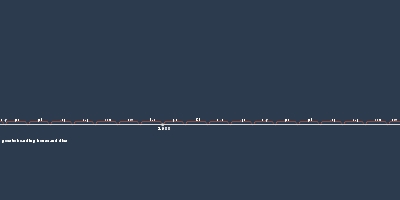15 lugl 1987 anni - Information about the benefits she'd receive from the government
Descrizione:
One of defendant's house "rules" was that her tenants were not permitted to take their mail out of the mailbox. She would fetch the mail and distribute it to her tenants. Many of her tenants were recipients of financial benefits from the state or federal government. Their monthly state and federal checks would be sent through the mail. Food stamps identification cards were also sent to recipients by mail. An individual who lived alone could collect $87 a month in food stamps in 1988. Once it was determined that an individual was eligible for food stamps, the individual would continue to receive food stamps for one year. However, individuals who lived in room and board establishments were considered ineligible for food stamps. General assistance benefits provided about $270 per person per month at that time, and an individual could continue to receive such funds indefinitely so long as he or she qualified.The federal government provided more generous benefits under the Supplemental Security Income (SSI) program for needy individuals who had no source of income and were mentally or physically disabled, blind or over the age of 65. SSI is "a federal welfare program." This program was administered by the Social Security Administration, but it was completely distinct from the Social Security (SSA) program which was funded by an individual's "FICA taxes" during his or her working life. Individuals who received SSI did not need to have worked to qualify for SSI. Eligibility for SSI benefits was based on need, and the benefit amounted to about $637 a month per person in 1988. However, an individual receiving SSI was not eligible for general assistance or food stamps. Any "physical or mental or emotional" disability which "prevents you from doing work" was sufficient to qualify for SSI. Individuals receiving SSI could designate a "representative payee" to receive their SSI checks for them. The representative payee was required to report to the Social Security Administration if the individual moved or died, and the payee was required to report on a yearly basis as to how the money had been used. Once an individual qualified for SSI benefits, the benefits continued to be paid indefinitely. Those who qualified for SSI benefits were automatically entitled to be paid indefinitely. Those who qualified for SSI benefits were automatically entitled to MediCal health benefits. MediCal cards, which signified an individual's eligibility for MediCal coverage, were sent to qualifying individuals every month.
Other government benefit programs provided smaller benefits to specific groups of individuals. The state's Home Energy Assistance Program (HEAP) provided a yearly benefit of between $30 and $400 to low-income individuals to help them pay utility bills. The state's Renter's Assistance Program (RAP) provided a yearly benefit of up to $240 to elderly, blind and disabled renters to compensate for "property taxes presumed to have been paid by renters' renting [sic] payments." In order to receive RAP benefits, a person was required to apply between May 18 and August 31 of the following year for benefits for the previous year. The state also offered renters a credit of $60 annually which could be used as a credit on taxes or refunded to the renter. This credit was available to every renter in a room and board house so long as each was "a separate individual household."
Like many of her tenants, defendant was a recipient of SSI benefits on the basis of a diagnosis of chronic schizophrenia. She had been receiving these benefits continuously since 1978 even though prisoners are ineligible for SSI benefits and defendant had been incarcerated from August 1982 to September 1985. HEAP, RAP and Renter's Credit benefits were obtained by defendant in her own name as well as in the names of many of her tenants. Defendant was also the recipient of many flurazepam prescriptions for several years. Flurazepam, also known as Dalmane, is a hypnotic sedative which is used to induce sleep. It is not a very strong drug. "It helps you fall asleep. It doesn't knock you out." Between October 1985 and September 1988, defendant filled 35 prescriptions for flurazepam including 4 months in which she filled more than one prescription for flurazepam. Most of these prescriptions were for "a month's supply" of flurazepam, or thirty 30-miligram capsules, to be taken each night at bedtime.
Aggiunto al nastro di tempo:
Data:
15 lugl 1987 anni
Adesso
~ 38 years ago
